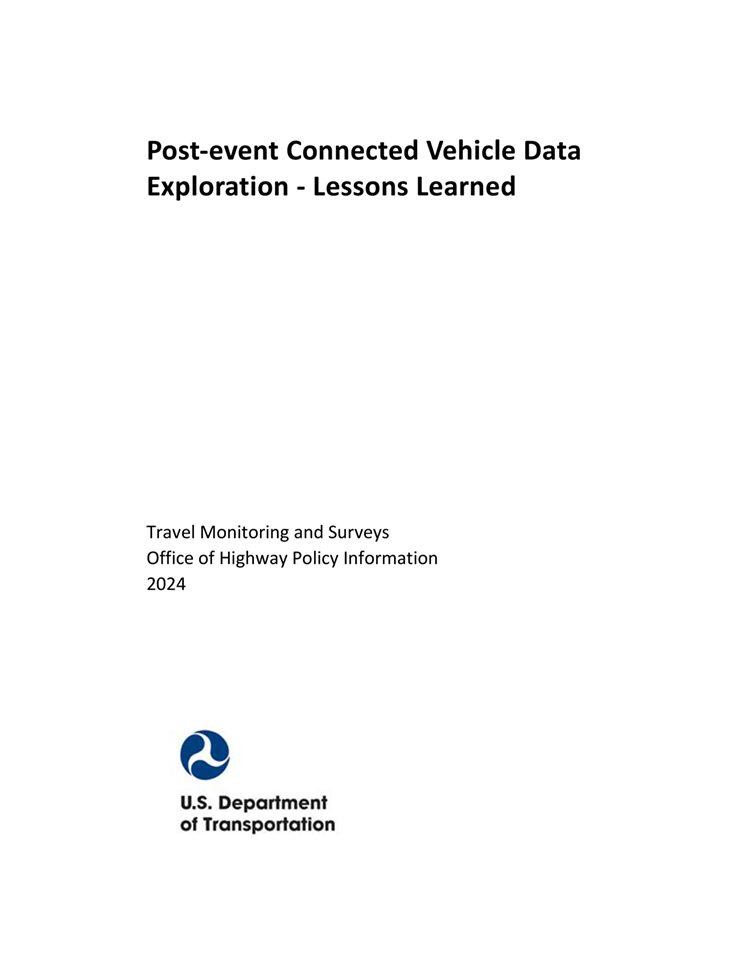U.S. Department of Transportation
Federal Highway Administration
1200 New Jersey Avenue, SE
Washington, DC 20590
202-366-4000

Printable version [PDF 1 MB]
Travel Monitoring and Surveys
Office of Highway Policy Information
2024

[ Technical Report Documentation Page | Notice | Quality Assurance Statement ]